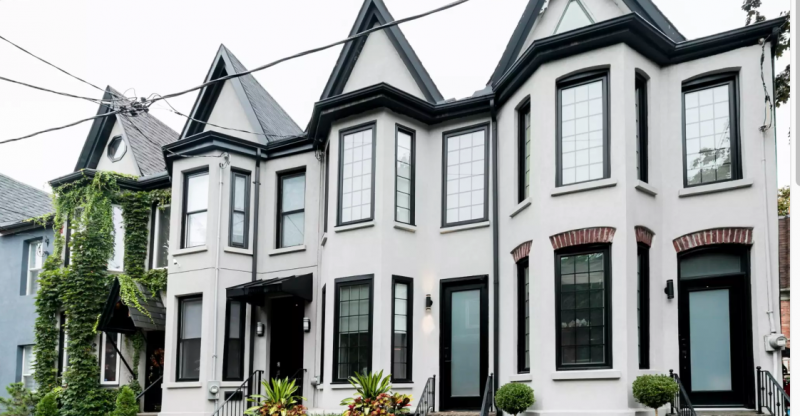Permit for multiplex in Toronto Can Take As Little As 10 Days
How long it will take to get a Permit for multiplex in Toronto? short answer, under the new policy, Building Code specifies 10 business days for a homebuilding permit and 15 days for a small building.
Historically, the process of getting approval for a multiplex in Toronto involved obtaining the necessary permits and approvals from various government agencies, such as the City of Toronto and the Ontario Municipal Board. This can include submitting detailed plans and designs for the multiplex, obtaining permits for building and zoning, and conducting community consultations to gather feedback and address any concerns from local residents.
The timeline for this process can vary depending on a variety of factors, including the location of the proposed multiplex, the size and scope of the project, and any potential issues that may arise during the approval process.
Toronto’s city council recently made changes to zoning laws that will make it easier for property owners to build multiplexes in various neighborhoods across the city. Under these new rules, homeowners and builders will be able to construct duplexes, triplexes, fourplexes, and even fiveplexes (on lots large enough to accommodate them) in previously “yellowbelt” neighborhoods. These neighborhoods, which account for approximately 70% of Toronto’s residential areas, were previously reserved exclusively for single-family homes.
For many property owners, this change means they will no longer have to navigate the often complicated and time-consuming process of obtaining the necessary permits and approvals from various government agencies, including the City of Toronto and the Ontario Municipal Board. Instead, they can move forward with their construction plans more quickly and with fewer restrictions.
However, the implications of these changes extend far beyond just property owners and builders. For one, the availability of multiplexes could have a significant impact on the cost of housing in Toronto. By increasing the supply of available housing options, these new developments could help drive down the overall cost of housing, making it more affordable for residents.
At the same time, the arrival of multiplexes in previously single-family home neighborhoods may also have some negative consequences. For example, some residents may worry about the impact these new developments will have on the character and feel of their neighborhood. They may also be concerned about increased traffic, noise, and congestion that could result from an influx of new residents.
Overall, it remains to be seen just how quickly multiplexes will begin popping up in Toronto’s neighborhoods, and what the long-term impact of these changes will be on the city’s housing market and residents. However, it is clear that these new zoning rules represent a significant shift in the way the city approaches housing development and could have far-reaching implications for years to come.
According to a recent email from City of Toronto spokesperson Jessamine Luck, the city’s new multiplex zoning bylaw amendments are aimed at clarifying the rules for building duplexes, triplexes, and fourplexes in Toronto. Luck noted that these changes align the standards for multiplexes with those for single-detached homes, and represent a significant shift in the way the city approaches housing development.
Luck also pointed out that under the province’s Bill 23, which was passed in the fall of 2022, municipalities are already required to allow at least three residential units on any property. However, the City of Toronto’s new rules take multiplex allowances a step further, and allow for up to fiveplexes on lots that are large enough to accommodate them.
Despite these changes, there are still some unanswered questions regarding the timeline for implementing the new rules. As a result, staff have agreed to report back to the committee in early 2026 or when they approve 200 multiplex building permits, whichever comes first. This suggests that there may be some delays or uncertainty in the short term, as the city adjusts to these new regulations and begins to process permit applications.
Overall, the changes to Toronto’s multiplex zoning bylaws represent a significant shift in the city’s approach to housing development, and could have far-reaching implications for the city’s housing market and residents. While there may be some uncertainty and questions in the short term, it seems likely that multiplexes will become an increasingly common sight in Toronto’s neighborhoods in the years to come.
Assuming that all 200 residents apply for small building permits on April 1st, the processing time for each application is no more than 15 business days. Therefore, it would take a maximum of 15 business days to process each permit.
To calculate the total processing time for all 200 permits, we can multiply the processing time for each permit (15 business days) by the number of permits (200):
15 business days/permit x 200 permits = 3,000 business days
So it would take a maximum of 3,000 business days to process all 200 permits, which is equivalent to approximately 12 years. However, this is a theoretical calculation based on the maximum processing time allowed by the city, and the actual processing time for each permit may vary depending on a number of factors.
If the city approves 200 multiplex building permits before early 2026, then that would be sooner than the agreed upon date of reporting back to the committee in early 2026. In that case, the city would not have to wait until early 2026 to report back to the committee. Instead, they would report back as soon as they reach the 200-permit threshold.
On the other hand, if the city has not approved 200 multiplex building permits by early 2026, then that would be the sooner of the two options, and the city would have to report back to the committee at that time.
How many more homes would be in toronto if 5% of the property owners applied for multiplex permit with each asking for 3 additional units in the multiplex?
To estimate the number of additional homes that would be in Toronto if 5% of the property owners applied for multiplex permits with each asking for 3 additional units in the multiplex, we can use the following calculation:
Number of single-detached homes in Toronto * 5% = Number of properties that could potentially apply for multiplex permits
481,000 * 0.05 = 24,050 properties
Next, we can calculate the number of additional units that could potentially be built if each of these properties added 3 units to their multiplex:
24,050 properties * 3 additional units = 72,150 additional units
Therefore, if 5% of property owners in Toronto applied for multiplex permits and each requested 3 additional units in their multiplex, it could potentially result in 72,150 additional homes in the city. However, it’s important to note that this is a rough estimate and there are many factors that could impact the actual number of additional units that are built.
Allowing for the construction of duplexes, triplexes, and fourplexes could provide more affordable housing options and increase the density of certain neighborhoods. It could also help to address the issue of urban sprawl by making more efficient use of existing land. However, there could also be concerns around increased traffic, noise, and the impact on the character of certain neighborhoods. The effects of the changes will likely be the subject of ongoing discussion and evaluation.





